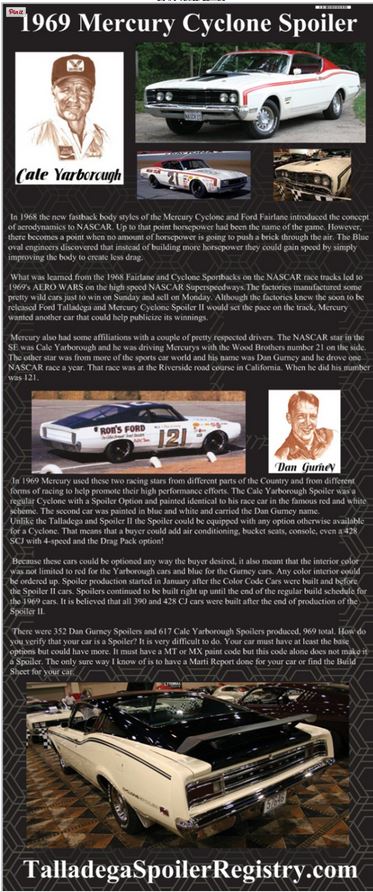

Recently, there was some discussion on one of our Forum threads on the topic of Show Signs. There are a lot of alternatives and no fully correct answers for every situation. I have posted several different examples on this page for your consideration. Almost every sign has a different purpose. Some try to explain the history of that particular model of car. Some tell the story of that specific car. Some have an interesting racing history while others may have been found in a barn. Still other car owners want to give credit to all the friends and shops that worked on the car while others want to brag about the TV shows or magazines the car has been in. Low mileage original car owners want to make sure you know it is a survivor while owners with over 250,000 miles on their rides like to brag about that.

One question persists; should the sign be wordy or brief? My wife and I go round and round about this question. In my opinion it depends on the car and the story. Most people at a car show will not take time to read any sign other than to find out what make and model it is and what year it is. However, if you have a story to tell you have to get a little wordy. Those that are interested will stop and read it, at least the first paragraph or so.

Another question that is ever present; how big should the sign be? Some shows have even started to limit the size of signs. A general rule of thumb is if it blocks the view of the car next to you, it is too big. The other thing to remember regarding the size of your sign as well as the material it is made of is what happens when the wind picks up and blows it over? Who is going to pay for the damage to your car or worse yet, the one next to you, when the sign takes off and lands on someones hood?

My guidelines are:
- The sign should be no taller than the top of your fender. Preferably, the top of the sign should be approximately even with the top of the front wheel well opening.
- All text on the sign should be readable by someone standing up at least 3 to 4 feet from the sign.
- It is said that a picture is worth a thousand words. If that is true, try to incorporate useful photos or images that tell part of the story If your car is restored but was found in a field a picture will tell that story and catch a person’s eye that is walking by much better than the words “found in a field”.
- I like to use low tripods to hold my signs. At cruise-ins I will leave the tripod home and just lean the sign up against the front bumper. If you use a short tripod you will likely need to secure the sign to it as well as weight down the tripod to prevent it from blowing around.
- I like to have our signs printed on a very light weight thin aluminum board with rounded corners. I have also used a thick “gatorboard”. Both should be laminated to protect from moisture. I have used foamcore board which is light weight but not nearly as strong as gatorboard but neither is as good as the thin aluminum board. Plastic corrugated boards can look cheap but are a less expensive alternative.
- No glass! If you want to frame it and mount the sign cover it with a sheet of clear plastic, not glass. Wind and little kids are a high risk and a danger with broken glass.

These are just some suggestions. I am sure each of you has your own criteria and recommendations. If you only do indoor shows then your criteria will be completely different. If you only go to cruise-ins and not judged shows you will want a different sign than for a concours show that may not even allow them.

If you have some more examples send them along.
Here are some other example of signs at the 2015 Fairlane Club of America nationals.
Here are some more examples you might get some ideas from.
























